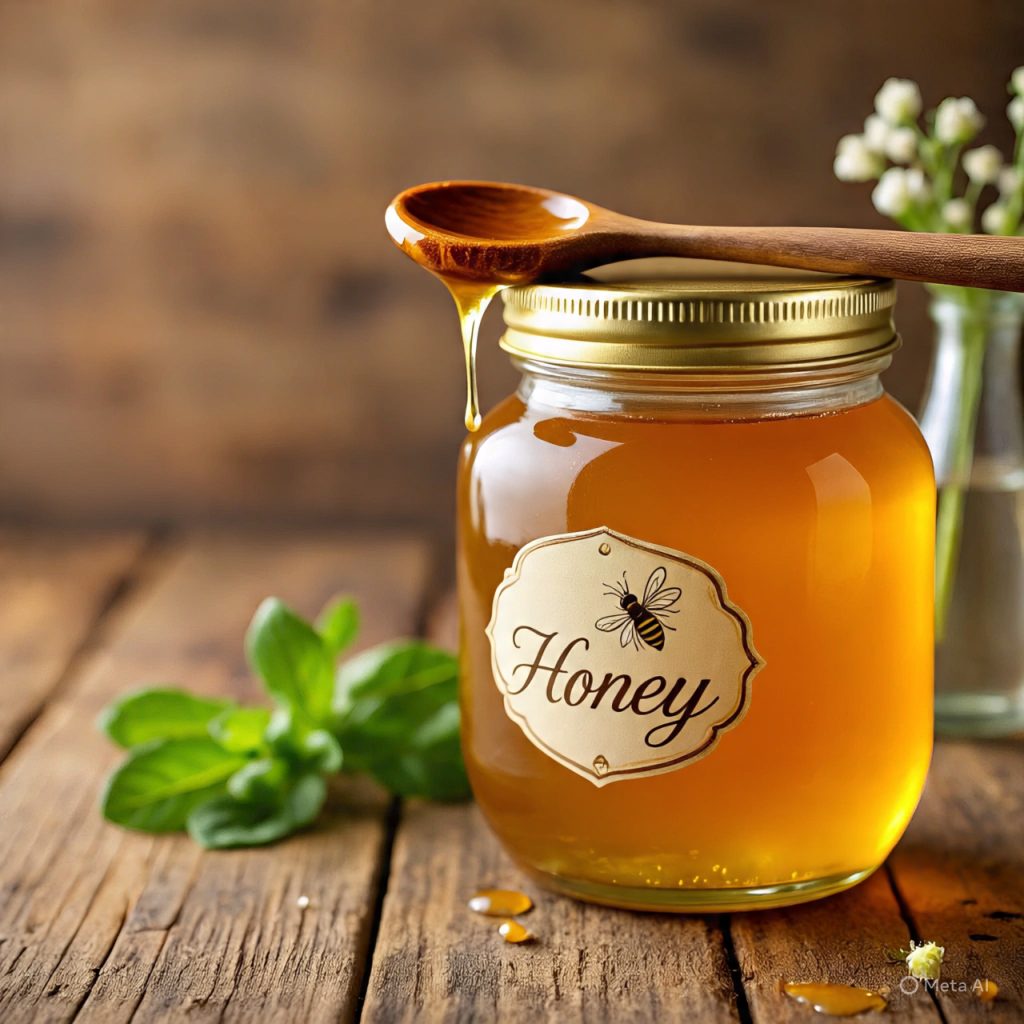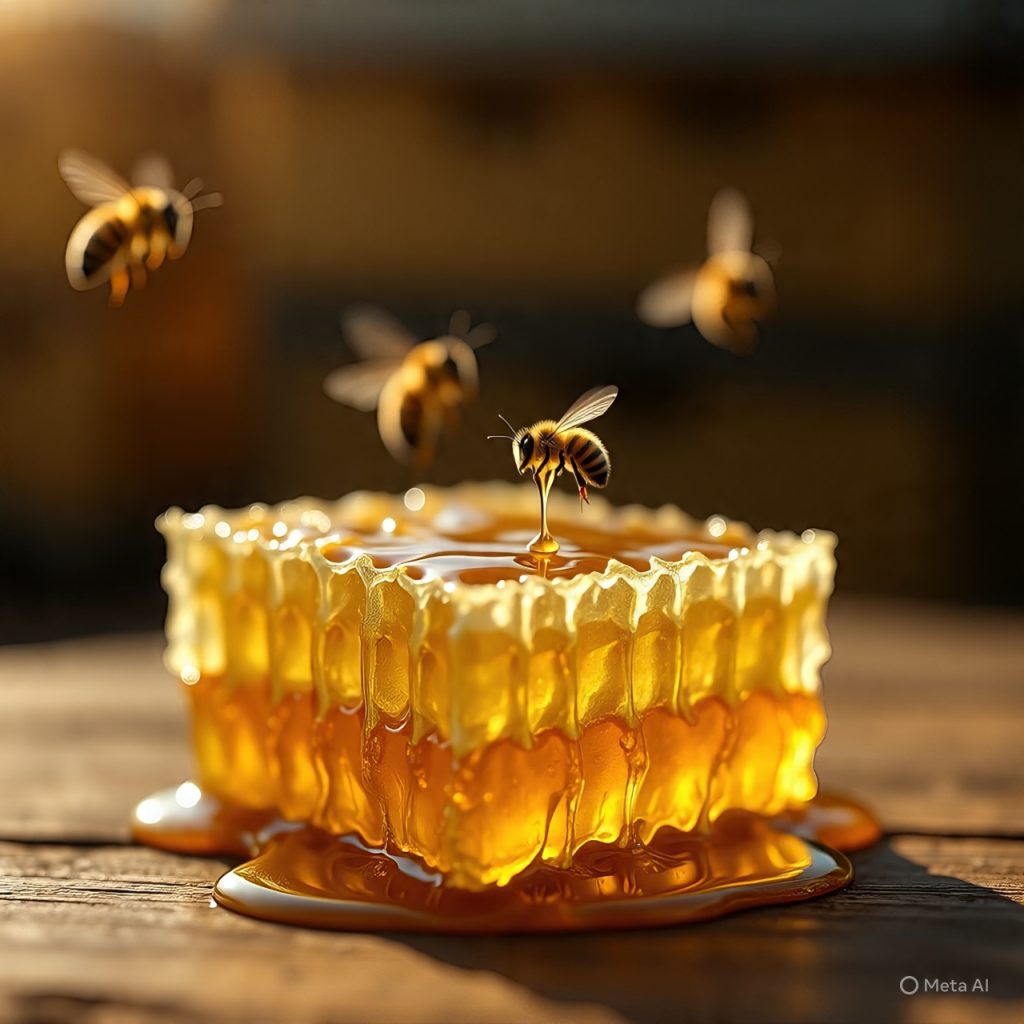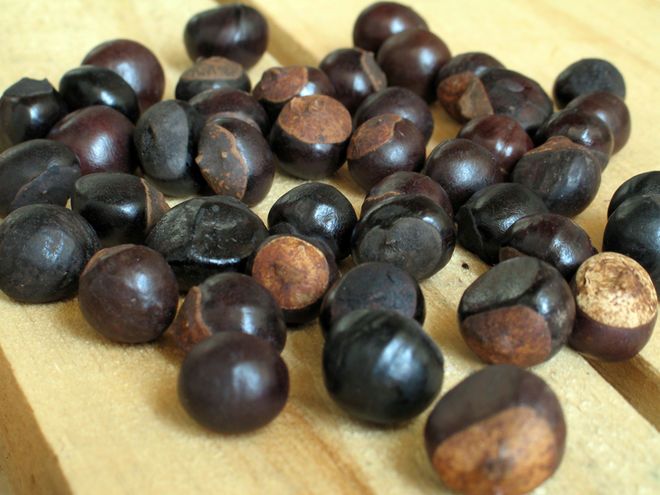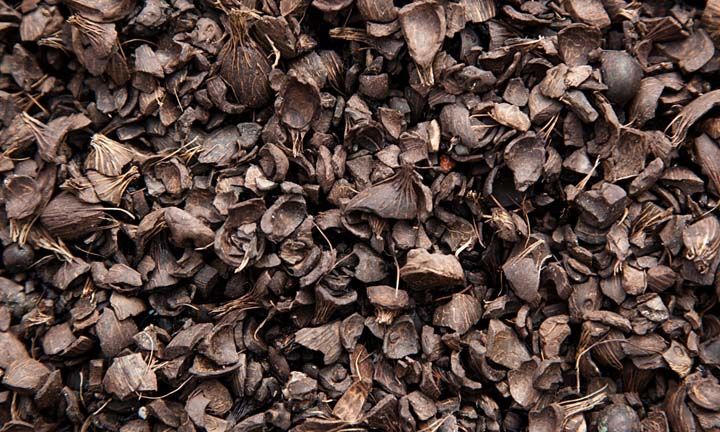What It Is
Honey is a natural sweet, viscous substance produced by honeybees (Apis mellifera) from the nectar of flowers. Bees collect nectar, transform it through enzymatic activity and evaporation, and store it in honeycombs. This natural product is renowned for its nutritional, medicinal, and industrial uses.
Honey is composed mainly of sugars (fructose and glucose), water, enzymes, amino acids, vitamins, minerals, and antioxidants. Its unique flavor, color, and aroma depend on the floral source of the nectar, geographical location, and production methods.
In Africa, particularly Nigeria, honey is widely harvested from wild bees (forest honey) and farmed hives (apiary honey). Nigerian honey is highly sought after internationally because it is often 100% organic and unadulterated, unlike in some countries where honey is diluted with sugar syrups.

Types of Honey
-
By Source
-
Floral Honey: Produced from nectar of specific plants (e.g., acacia honey, sunflower honey, orange blossom honey).
-
Wildflower Honey: Made from nectar collected from multiple plants.
-
Monofloral Honey: Derived mostly from one flower type (e.g., acacia, eucalyptus).
-
Multifloral Honey: Mixture from various plants.
-
-
By Processing
-
Raw Honey: Unprocessed, directly extracted from the comb, retaining pollen, enzymes, and natural nutrients.
-
Filtered Honey: Strained to remove wax and impurities.
-
Pasteurized Honey: Heated to prevent crystallization and increase shelf life.
-
-
By Appearance
-
Clear Honey: Transparent and golden.
-
Creamed Honey: Crystallized with a smooth, spreadable texture.
-
Dark Honey: Rich in minerals and antioxidants, often from forest plants.
-
Nutritional Value of Honey (per 100g)
-
Energy: 304 kcal
-
Carbohydrates: 82 g (mainly glucose and fructose)
-
Water: 17 g
-
Protein: 0.3 g
-
Fat: 0 g
-
Vitamins: B2 (Riboflavin), B3 (Niacin), B5 (Pantothenic acid), B6, Folate, Vitamin C
-
Minerals: Calcium, Magnesium, Potassium, Iron, Zinc, Phosphorus, Manganese
-
Antioxidants: Flavonoids and phenolic compounds
Uses of Honey
1. Food & Beverages
-
Natural sweetener in tea, coffee, smoothies, and cereals.
-
Ingredient in bakery products, confectionery, jams, and sauces.
-
Used in brewing mead (honey wine) and honey beer.
-
Glazes and marinades for meat, fish, and roasted products.
2. Medicine & Health
-
Natural remedy for cough, sore throat, and digestive issues.
-
Applied as a wound dressing (antibacterial and healing properties).
-
Boosts immunity and energy levels.
-
Used in traditional medicine for treating ulcers, burns, and infections.
3. Cosmetics & Personal Care
-
Ingredient in skin care products like face masks, soaps, creams, and lotions.
-
Used in hair care products for shine and moisture retention.
-
Natural humectant for moisturizing dry skin.
4. Industrial Uses
-
Used in the production of nutraceuticals and dietary supplements.
-
Ingredient in alcohol fermentation industries.
-
Base material in pharmaceutical syrups and lozenges.
Export Value of Honey
Globally, the honey market is valued at over $9 billion (2025 projection), with steady annual growth due to demand for natural and organic products.
-
Top Exporters: China, Argentina, India, Ukraine, Turkey, Vietnam.
-
Top Importers: United States, Germany, Japan, United Kingdom, Saudi Arabia, Canada.
Nigeria has growing opportunities in honey export because:
-
Honey is largely organic and chemical-free.
-
Local production costs are relatively low.
-
There is increasing global demand for organic African honey.
Packaging & Export Forms
-
Bulk Packaging: 25kg – 300kg food-grade drums or barrels for industrial buyers.
-
Retail Packaging: 250g, 500g, 1kg in glass jars, PET jars, or squeezable bottles.
-
Specialty Packaging: Honeycomb-in-jar, organic-certified honey, or flavored honey (ginger honey, turmeric honey, etc.).
Packaging must meet international food safety standards (ISO, HACCP, Codex Alimentarius). Proper labeling with nutritional information, country of origin, and HS Code is essential.

UK Market Demand for Honey
The United Kingdom is among the largest honey consumers in Europe, importing more than 40,000 metric tons annually. UK consumers prefer:
-
Raw and organic honey (especially African and Asian origin).
-
Specialty honey like acacia, manuka, and forest honey.
-
Fairtrade-certified honey to support sustainable sourcing.
Demand is driven by health-conscious consumers who prefer honey over refined sugar. Nigerian exporters can position their honey as 100% natural, organic, and chemical-free, which attracts premium prices.
HS Codes for Honey
-
HS Code 0409.00 – Natural honey.
-
HS Code 1702.90 – Other sugars (when honey is processed into sweeteners).
Local Sources of Honey in Nigeria
Honey is produced in almost all regions of Nigeria, with major honey-producing states including:
-
North Central: Kwara, Kogi, Niger, Benue
-
Southwest: Oyo, Osun, Ekiti, Ogun
-
North: Kaduna, Bauchi, Taraba, Plateau
-
Southeast & South-south: Ebonyi, Cross River, Enugu
These regions have abundant wild bees and apiary farms, making Nigeria a key honey source in Africa.
Export Considerations
-
Certification: Organic certification, NAFDAC approval, SON (Standards Organization of Nigeria) compliance, and quality lab testing.
-
Regulations: Must meet EU/UK food safety standards (low moisture content, free from antibiotics and contaminants).
-
Documentation:
-
Commercial Invoice
-
Packing List
-
Phytosanitary Certificate
-
Certificate of Origin
-
Analysis Certificate
-
Bill of Lading/Airway Bill
-
Conclusion
Honey is not just a sweetener—it is a nutritional, medicinal, and industrial product with massive global demand. For Nigerian exporters, honey presents a lucrative opportunity, especially in markets like the UK, where consumers value natural, organic, and traceable food products. With proper processing, certification, and packaging, honey export can become one of the most profitable agricultural businesses.







